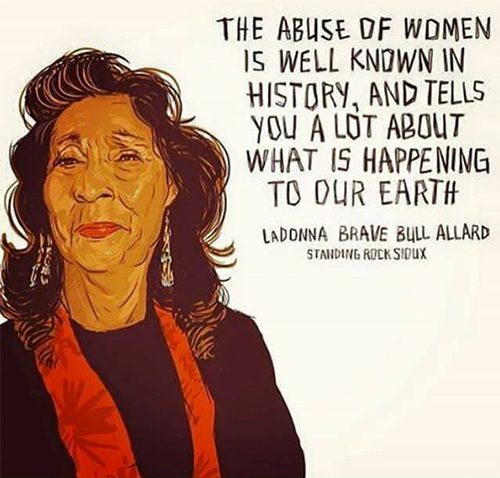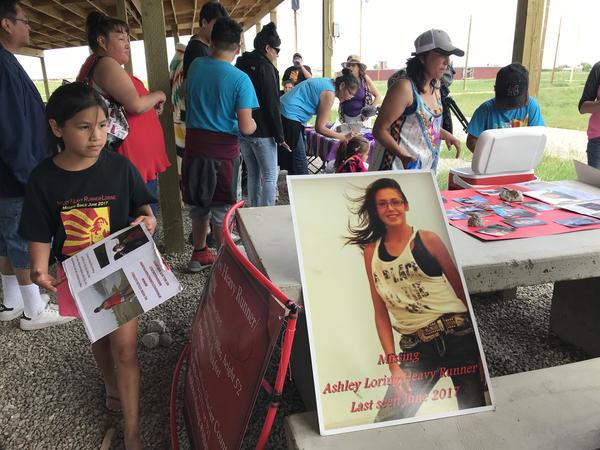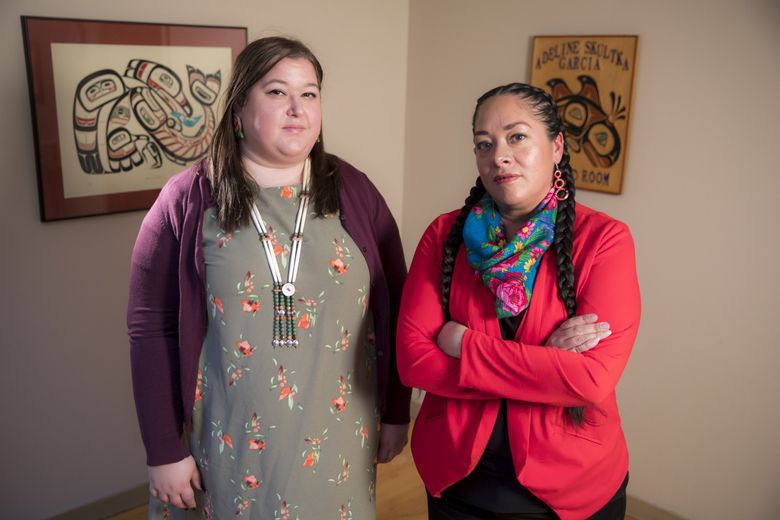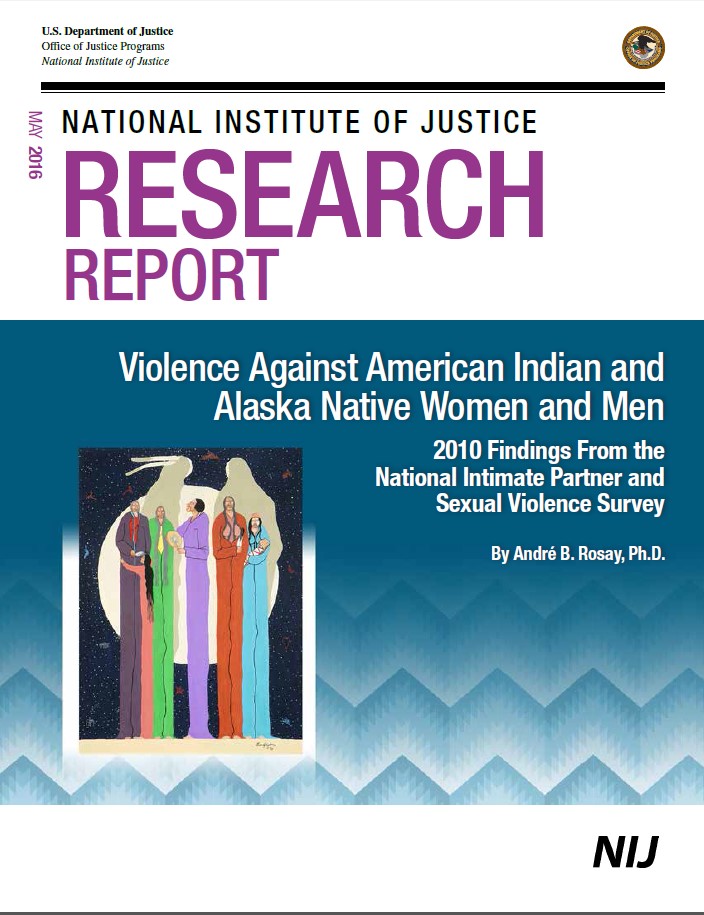You are invited: May 4, 2023 | 11:00 am | MU Patio
|
May 5, 2020 The Library is honored to join MCC and the American Indian Institute for a National Day of Awareness: #MMIW |
 |
On April 25, 2018, Senate Resolution 401 was passed without amendment, designating May 5th as a National Day of Awareness for Missing and Murdered Native Women and Girls. The resolution was drafted in memory of Hanna Harris (Northern Cheyenne) who was murdered July 2013. It was first introduced in April 2016, on the same day that RoyLynn Rides Horse (Crow) passed away after having been beaten, burned, and left in a field to die. Nearly 200 tribal, national, and state organizations supported this resolution.
Throughout tribal communities, women face murder rates more than 10 times the national average. Last November 2019, the American Indian Institute (A.I.I.), and amazing library staff at MCC’s Southern/Dobson and Red Mountain campuses, partnered to educate the campus and community about this often-invisible issue, by creating a dynamic display of red t-shirts and a library webpage full of statistical information, videos, books, and other information as a means to raise awareness. Read more about that HERE.
With over 6000 cases of missing and murdered women/girls in the United States, just over 500 have been identified specifically as missing and murdered. With thousands reported every year very little is being done to investigate and typically the process is long, arduous, and often not taken seriously. In AZ alone there are 54 identified cases.
As we shelter-in-place due to the COVID-19 protocols, continued information shows that ugly acts of domestic violence continue to occur. So, on May 5, 2020 we ask you join MCC's American Indian Institute on the national day of awareness and to highlight this issue affecting Native American communities around the country.
If you would be willing to participate, please consider the following:
- Wear RED on May 5th & post a photo on social media with the hashtags: #Mesacc and #MMIW
- Host a prayer circle or candlelight vigil on May 5th
- Post a list of names of missing sisters from your community
- Create a living memorial - hang a red dress or t-shirt outside your house
- Register to participate in the National Indigenous Women’s Resource Center’s webinar: Honoring Missing and Murdered Indigenous Women
Several recent reports are shedding light on the grossly under-reported epidemic of Missing and Murdered Indigenous Women & Girls (MMIW). The intersecting issues driving this issue are many. You are invited to browse this guide and build your own understanding about why the cases of Missing and Murdered Indigenous Women & Girls are ignored.
To get started, let's hear from two vanguard researchers, Annita Lucchesi (Southern Cheyenne descent) and Abigail Echo-Hawk (enrolled member of the Kitkehahki band of the Pawnee Nation of Oklahoma), who collected data from around the country as reported in their 2018 and 2019 publications. (Bettina Hansen / The Seattle Times)
| The Researchers | The Video | The 2018 Report | The 2019 Report |
|
Click to read. |
Click to watch. |
Click to read. |
Click to read. |
Additional reports and corresponding webinars:
 |
Reclaiming Power and Place: The Final Report of the National Inquiry into Missing and Murdered Indigenous Women and Girls. June 2019. |
 |
ADDRESSING AN EPIDEMIC: MISSING AND MURDERED INDIAN WOMEN, MONTANA LEGISLATIVE SERVICES DIVISION, STATE-TRIBAL RELATIONS COMMITTEE, September 2018 |
 |
Sexual Violence Among Native Women: A Public Health Emergency, September 2018. |
 |
Our Bodies, Our Stories: Sexual Violence Among Native Women in Seattle, WA, Urban Indian Health Institute, February 2018 |
 |
Violence Against American Indian and Alaska Native Women and Men: 2010 Findings From the National Intimate Partner and Sexual Violence Survey, Department of Justice, Office of Justice Programs, André B. Rosay, Ph.D., May 2016. |
 |
MAZE OF INJUSTICE The failure to protect Indigenous women from sexual violence in the USA, Amnesty International, 2006 |
Webinar: Decolonizing Data: Strengthening Community Voices to Take Action for Our Missing Relatives
A June 5, 2019 webinar (1:06 minutes) in partnership with the National Missing and Unidentified Persons System (NamUs) where you can learn how to enter your missing Native loved ones’ information into the NamUs database.
Webinar: Who Counts? Racial Misclassification and American Indians/Alaska Natives
In this June 2019 1-hour webinar, learn about racial misclassification of American Indians/Alaska Natives in data and the consequences for systemic inequities in healthcare. Key Concept: Indigenous Data Sovereignty -- The right to govern the collection, ownership, and application of one's own data.
Webinar: Violence Against American Indian and Alaska Native Women and Men 2010 Findings From the National Intimate Partner and Sexual Violence Survey By André B. Rosay, Ph.D., Director Justice Center, University of Alaska Anchorage, May 18, 2016
Testimony: Subcommittee for Indigenous Peoples of the United States Hearing
March 14, 2019
American Indian and Alaska Native women have murder rates 10 times the national average, yet cases of missing and murdered women are often ignored. Join us this Thursday, March 14, at 10:00 a.m. as our Subcommittee for Indigenous Peoples of the United States looks for solutions to end the cycle of violence against Native women.
The MCC Libraries offers resources to learn about Missing and Murdered Indigenous Women & Girls, including streaming video, articles, and books. Please find a selection here and remember to login with your MEID when off campus.
Select Streaming Videos
FINDING DAWN puts a human face on a tragedy that has received precious little attention – and one which is surprisingly similar to the situation in Ciudad Juarez, on the other side of the U.S. border. Dawn Crey, Ramona Wilson and Daleen Kay Bosse are just three of the estimated 500 Aboriginal women who have gone missing or been murdered in Canada over the past 30 years. Acclaimed Métis filmmaker Christine Welsh embarks on an epic journey to shed light on these murders and disappearances that remain unresolved to this day. She begins at Vancouver’s skid row where more than 60 poor women disappeared and travels to the “Highway of Tears” in northern British Columbia where more than two dozen women (all but one Native) have vanished. This engrossing film illustrates the deep historical, social and economic factors that contribute to the epidemic of violence against Aboriginal women. It highlights the disturbing, world-wide culture of impunity that allows murders of women – especially those who are poor, indigenous, or sex workers – to go unsolved and unpunished. Available in the MCC Library streaming video database, Kanopy, this 74 minute film is embedded her for your convenience.
Films on Demand
Violence Against Indigenous Women (Segment) - 03:29
Select Articles
- Bailey, Jane, and Sara Shayan. “Missing and Murdered Indigenous Women Crisis: Technological Dimensions.” Canadian Journal of Women & the Law, vol. 28, no. 2, July 2016, pp. 321–341. EBSCOhost, doi:10.3138/cjwl.28.2.321.
- “Indian Law — Tribal Courts — Congress Recognizes and Affirms Tribal Courts' Special Domestic Violence Jurisdiction over Non-Indian Defendants. — The Violence Against Women Reauthorization Act of 2013, Pub. L. No. 113-4, Tit. IX, 127 Stat. 54, 118–26 (to Be Codified in Scattered Sections of the U.S. Code).” Harvard Law Review, vol. 127, no. 5, 2014, pp. 1509–1518. JSTOR, JSTOR, www.jstor.org/stable/23741446.
- Kuokkanen, Rauna. “Globalization as Racialized, Sexualized Violence.” International Feminist Journal of Politics, vol. 10, no. 2, June 2008, pp. 216–233. EBSCOhost, doi:10.1080/14616740801957554.
- Moral, Paulina Garcia-del. "Representation as a technology of violence: on the representation of the murders and disappearances of aboriginal women in Canada and women in Ciudad Juarez." Canadian Journal of Latin American and Caribbean Studies, vol. 36, no. 72, 2011, p. 33+. World History in Context, http://link.galegroup.com/apps/doc/A323408805/UHIC?u=mcc_mesa&sid=UHIC&xid=8eddba8b. Accessed 15 Nov. 2018.
- Morton, Katherine. "HITCHHIKING AND MISSING AND MURDERED INDIGENOUS WOMEN: A CRITICAL DISCOURSE ANALYSIS OF BILLBOARDS ON THE HIGHWAY OF TEARS." Canadian Journal of Sociology, vol. 41, no. 3, 2016, p. 299+. Academic OneFile, http://link.galegroup.com/apps/doc/A557705523/AONE?u=mcc_mesa&sid=AONE&xid=6488aa6e. Accessed 15 Nov. 2018.
- Razack, Sherene H. “Sexualized Violence and Colonialism: Reflections on the Inquiry into Missing and Murdered Indigenous Women.” Canadian Journal of Women & the Law, vol. 28, no. 2, July 2016, pp. i–viii. EBSCOhost, doi:10.3138/cjwl.28.2.i.
- Savarese, Josephine L. “Challenging Colonial Norms and Attending to Presencing in Stories of Missing and Murdered Indigenous Women.” Canadian Journal of Women & the Law, vol. 29, no. 1, Jan. 2017, pp. 157–181. EBSCOhost, doi:10.3138/cjwl.29.1.157.
- Scribe, Megan. "Pedagogy of Indifference: State Responses to Violence Against Indigenous Girls." Canadian Woman Studies, vol. 32, no. 1-2, 2017, p. 47+. Academic OneFile, http://link.galegroup.com/apps/doc/A551496027/AONE?u=mcc_mesa&sid=AONE&xid=bc49b91d. Accessed 15 Nov. 2018.
- Zhang, Margaret H. "Special domestic violence criminal jurisdiction for Indian tribes: inherent tribal sovereignty versus defendants' complete constitutional rights." University of Pennsylvania Law Review, Dec. 2015, p. 243+. Academic OneFile, http://link.galegroup.com/apps/doc/A442286322/AONE?u=mcc_mesa&sid=AONE&xid=60d12de0. Accessed 18 Nov. 2018.
Only have a few minutes?
Visit any of these websites for information on
Missing and Murdered Indigenous Women & Girls:
Media Portrayals of Missing and Murdered Aboriginal Women
 |
4 out of 5 of our Native women are affected by violence today. |
The Missing and Murdered Indigenous Women Database
|
When compared to national averages Indigenous women are: • 2 ½ times more likely to be assaulted These statistics reflect the normalization of violence against Indigenous women in this country. Indian Law attorney, Sarah Deer, notes that, “Predators may target Native women and girls precisely because they are perceived as marginalized and outside the protection of the American legal system.” Jurisdictional issues, as well as federal law and policies, have impacted Indigenous women on reservations and outside of reservation boundaries in tragic ways. The statistics about violence against Indigenous women is alarming. However, the lack of general awareness is equally, if not more, disturbing. |
From: |
As UN Rapporteur Wraps Up Official Visit, Coalition calls for Immediate Government Action to Address MMIW crisis
Ongoing Systemic Inequalities and Violence Against Indigenous Women in Canada
Native Leaders Bring Attention to Impact of Fossil Fuel Industry on Missing and Murdered Indigenous Women and Girls
The Legal Strategy Coalition on Violence Against Indigenous Women
|
2,500 Native Women Murdered Or Missing May 28, 2018 At least 2,500 Native-American women have been murdered or they've gone missing in North America since 1900. There are likely many more, but many Native women go unreported. One researcher is trying to change that... |
Navajo Nation Council Delegate Amber Kanazbah Crotty has worked to pass tougher legislation against sex trafficking and sexual assault. |
Not just justice: inquiry into missing and murdered Aboriginal women needs public health input from the start
 |
Annita LucchesiCartographerDoctoral StudentResearch Consultant
Honoring Loretta Saunders by Annita Lucchesi
|
The crisis of murdered and missing Indigenous women: The response to a disproportionate problem is falling short.
ADDRESSING AN EPIDEMIC: MISSING AND MURDERED INDIAN WOMEN
Osage Director talks about missing and murdered Native women on movie panel [Wind River]
 |
VAWA 2013’s Special Domestic Violence Criminal Jurisdiction (SDVCJ) Five-Year Report |
At Women’s Marches, a spotlight on missing and murdered Indigenous women |
 |
Bill Aimed At Addressing Violence Against Indigenous Women Takes First Steps In Senate
 |
Symbolic and Discursive Violence in Media Representations of Aboriginal Missing and Murdered Women
- Awakening Mesa Community College to Indigenous Invisibilities -- #MMIWA brief report on the impact of the 2019 #MMIW Display on the Mesa Community College community.
Visit the Display at the MCC Libraries (SD and RM)





















































































